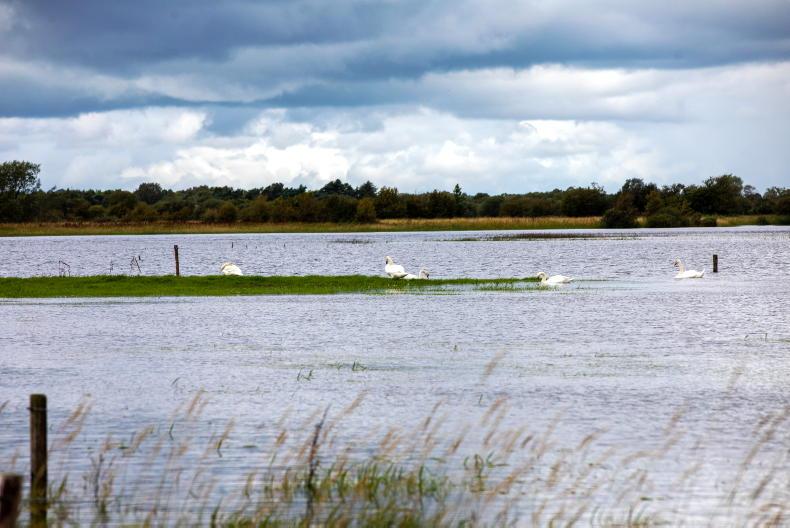Farmers affected by flooding along the Shannon Callows packed out the function room in Luker's Bar in Shannonbridge on Monday night to voice their concerns over fodder loss, grazing loss and scheme exclusion.
High waters on the Callows (Rivers Shannon, Suck, Brosna and Little Brosna) from July last year meant that farmers suffered the loss of thousands of bales of silage and hay, as well as grazing ground.
Describing the "very serious situation", farmer and member of the Save Our Shannon Organisation (SOSO) Michael Silke said that farmers from Galway, Offaly, Westmeath, Roscommon and even further afield [north Tipperary] were affected by summer flooding in 2023.
"By the middle of July, the Callows were flooded and the floods never left the Callows right through the summer.
"If we can't get something done about the water levels, both the manner in which it is being managed and the lack of maintenance, there's no future for any of us on the Callows."
Silke likened the widespread loss ensued by Callow farmers to the losses experienced in the tillage sector in 2023.
Very few people lost as heavily as we did
There was, he argued, €7m allocated to tillage farmers in support payments compared with the €800,000 allocated to those on affected by floods on the Shannon Calllows.
"As I said, there's closer to 500 farmers along the Shannon Callows, I think you'd search a long way before you'd find 500 tillage farmers who were as seriously affected last year. They were all affected to a certain extent, but very few people lost as heavily as we did," Silke added.
Anger
There was widespread anger at Monday's meeting over how the Department of Agriculture surveyed farmers' lands and how eligibility was reckoned for the Shannon Callows Flood Scheme.
It is estimated that there are 500 farmers in the Shannon Callows, spanning well over 7,000ac. However, just 230 farmers got any money under the scheme.
Lorna Murray-Fahy, a farmer from Banagher who lost the making of 300 bales from the Callows last year, said that the biggest insult was being told initially by the Department that none of her land was under water.
"I have Callows just outside Banagher and I have a similar experience to a lot of people in the room; I did get a partial payment, but it was not a reflection of everything that went under water.
"You'd be hoping that in time that it would get reviewed, but it's the bureaucracy behind it and the time that you spent chasing people to see how they came to that decision.
"It's the fall back of this area monitoring system (AMS). For me, they're taking precedence of an IT system over the farmer's word. There's a lot of back and forth and you're going nowhere with it at the same time.
"To me, it's a case that the system is not really functioning. It came in last year and there was no one really educated on how it was going to work or how they were going to assess farmers. It's scandalous, I think, what's happening."

Dominic Glynn from Lusmagh argued that despite a number of farmers in his area being along the Shannon, none of them got "any money".
He argued that a neighbour of his, whose land was separated by a single strand of wire, received the payment and he didn't.
Other farmers argued that the maintenance along the Shannon needs to be upped and dredging needs to be carried out "desperately" in order to allow a better flow of water.
Others maintained that Ardnacrusha is the problem and that the levels of water being held there are too high.
Drone footage
The SOSO committee are currently compiling drone footage of all Callow land which is under flood waters and plan on presenting it to the Department of Agriculture.






 This is a subscriber-only article
This is a subscriber-only article











SHARING OPTIONS: